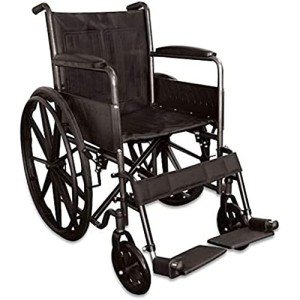10 Tell-Tale Symptoms You Need To Get A New Lightweight Bariatric Transport Wheelchair

Bariatric Transport Wheelchair
Created to be pressed by caregivers, transport chairs feature smaller front wheels and bigger rear wheels. They are a popular option for users with minimal mobility who can not walk separately.
When shopping for a lightweight bariatric transport wheelchair, consider the user's needs and how they'll utilize the chair. Also, determine any entrances and other areas the chair will travel through.
Seating
Bariatric transport chairs include a large 22 to 36 inch large seating area that accommodates extra-large users. The chair seat is made from breathable nylon and includes cushioned arms that can be gotten rid of and swing-away footrests. Unlike basic wheelchairs, which are perfect for typical body weights, bariatric chairs have heavier frames constructed from reinforced materials and bigger rear wheels that make it easier to press them. Speak with a mobility specialist to find out more about your options and to determine which kind of wheelchair is right for you. Bariatric wheelchairs are frequently covered by insurance providers like Medi-Cal if your medical condition meets their protection requirements.
Frame
Bariatric transport wheelchairs use sturdy frames made from strengthened materials like steel and have wider seats than basic wheelchairs. They are created for individuals with greater body weights and can hold an optimum weight capacity of 700 pounds. They also have larger rear wheels, which make them much easier for caregivers to push. Bariatric wheelchairs are typically covered by insurance coverage such as Medi-Cal, depending on the client's specific medical needs and medical diagnosis. Ask a healthcare professional or mobility specialist to assist choose the right chair for your special requirements.
Click on this link for more info. Medline Bariatric Transport Chair. Deep Red Hammertone Frame.
Weight
While basic wheelchairs have lighter frames and smaller wheels, bariatric transport chairs include heavier-duty products and a larger seat to accommodate users who weigh more than average. Because of their specialized style and construction, they tend to cost more than basic chairs. However, some insurance programs like Medicare and Medi-Cal might cover the cost of these chairs if the user fulfills the criteria for coverage. To read more about which chair is ideal for you, get in touch with a rehabilitation expert today.
Wheels
Bariatric transport wheelchairs have larger rear wheels than basic designs, making them simpler to press. They're frequently used in hospitals and home settings, where the chair is pushed by caretakers. The extra-large rear wheels likewise allow the chairs to navigate a range of terrain, consisting of outdoors.

Basic wheelchairs usually have smaller wheels, which make them more maneuverable inside your home but less appropriate for daily use on outside streets and other surfaces. Mobility professionals advise seeking advice from a doctor or mobility specialist to pick the best wheelchair for your specific needs and goals.
This durable, nylon strengthened steel transport chair supports patients approximately 500 pounds and features a roomy 22" seat, cushioned desk-length armrests, swing-away footrests and hand brakes. My Mobility Scooters -inch rear wheels guarantee a smooth ride in any environment.
